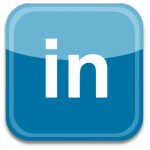Friend-raising before fund-raising
[Co-written with Roger Sametz; originally posted at Sametz.com]
Connecting your value and values to those of your constituents can give youa leg up.
The nonprofit world is a crowded one, and it’s only becoming more so. According to the Independent Sector, there are more than 1.4 million 501c3 organizations operating in the United States, and from 1998 to 2008, the number of charitable organizations registered with the IRS grew by 73 percent.
As the number of nonprofit organizations increases, so does the difficulty of raising funds. And with costs rising and support from foundations and government agencies flat or declining, more and more organizations are seeking to diversify revenue streams. They are working to increase earned income by appealing to a wider set of constituencies through an ever-expanding array of communication modes—all while trying to bolster the flow of unearned dollars from foundations, corporations, government, and individual sources. Building and sustaining this income mix is a complicated job, and no component is more important to current success and long-term sustainability than realizing the potential of significant support from individual donors.
Of course, it seems every organization is trying to boost its individual donor efforts. Competition for major donors is fierce, the landscape is cluttered and increasingly noisy, and every dollar secured is hard fought.Success is about knowing who your friends are and, perhaps more importantly, who they could be. Raising money from people whose values and personal vision align with yours—people with whom you can have a dialogue—is a lot more fruitful than simply making “asks.” Before you can raise funds, you need to raise friends.
Connect your brand to theirs
Organizations that compete successfully for major donors are skilled in making friends, in fostering relationships with people who share a vision and values, and instinctually understand the need for collaboration. But to build these relationships, prospects need first to understand your brand: your view of the future, values, and what you stand for.
A clearly-defined, consistently presented brand helps would-be friends to get to know you in advance of any fundraising-focused communication. It can help set you apart from competing organizations; make clear the areas in which you are uniquely effective; and position you in the landscape. By communicating to reinforce your brand—and mission—you are more likely to be able to start a dialogue with a prospect at “square two,” without having to explain who you are, and who you aren’t.
It helps to think of your brand as a mosaic: viewed from a distance, one sees the big picture, complete and, ideally, compelling. That’s the institutional view—what some prospects are looking for. Yet your mosaic has to also make sense when viewed up close, when a smaller section is the focus. Some potential friends may not care about all your “tiles;” for them a particular set may resonate deeply. For another donor, it’s a completely different set of tiles. Prospective friends and donors, just like your organization, aren’t monolithic.
And while articulating your brand is very important, it’s only part of the equation. Organizations that are successful at connecting to major donors are also skilled at understanding the “brands” of their prospects. What is it that they care about? What do they stand for? What is it that they want to accomplish? And while this will vary from person to person, there are some trends. Major donors are getting younger. Philanthropy is becoming less about creating a legacy chiseled in granite, and more about effecting meaningful change in one’s lifetime. By understanding your brand, and the brands of your prospects, you can find opportunities for dialogue where the two visions intersect, and offer personalized “ways-in” for friends old and new.
Additionally, major giving today is not about being a “good person,” checking off the $100 box on an annual fund donation form, or becoming a member. It’s about accomplishing something both the donor and the organization consider as vitally important. And while members or modest annual fund supporters can be transitioned to major donors, different motivations and expectations inform different kinds of giving. Organizations that are good at collecting 100,000 $50 checks are not often the same as those who excel at garnering 50 $100,000 checks.
What is a friend?
In our personal lives, we all know who our friends are, and for the most part, we know what to look for when seeking out new ones. We know what interests we might want to share, and what values they should hold most dear. We look for loyalty and trust, the sense that a friend wouldn’t hesitate to act on our behalf. We also know that relationships take work; they need to be cultivated and invested in before we ask too much of them. And friendship cuts both ways; a true friendship is mutually beneficial. Now, as the Executive Director or VP of Development for a nonprofit organization, who are your friends? Can you easily identify and nurture new ones? And, can you imagine asking for a six-figure investment from someone who is not your friend?
Do your homework
Who are the people you need to befriend? It can take work to figure it out, but it’s time well spent. Conduct one-on-one interviews and group discussions with both internal and external stakeholders—people at different “distances” from your organization. Ask board members, current donors, and volunteers why they give their dollars, time, and energy. Where’s the emotional connection? Talk to members and program participants to find out why they continue to be involved. For people you’re less close to, use social media outposts to foster two-way dialogue around your work. Or an invitation to a group discussion may be well received. You’ll learn valuable information, and the conversations alone will help bring you closer together.
A short online survey that includes both quantitative and qualitative queries might also be in order. Quantitative research is excellent at tracking actions; qualitative research helps reveal the motivations behind actions—and the goal here, after all, is to uncover reasons for connection. Friend-making is more about psychographics than demographics. It’s about finding out why people are involved (or could be), not about whether the person is a “NASCAR dad” or a “soccer mom.”
After some research, the next step is to look across your findings to identify the five or six high-level reasons why people are involved with your organization. What are the aspects of your work that stir emotion and get people excited? What do people value—and value about you? What is relevant or urgent for them? These are your prospect segments.
Start the conversation
Now integrate what you’ve learned about prospects and donors with what you know about your organization—both today and looking forward. For each value segment, what is it that you do well that can help advance the donor’s cause? What are the ways in which donors can participate with you to make it happen? If it’s a capital campaign, it’s an opportunity to identify those specific priorities that best align with a prospect’s vision and values. Move the conversation to the intersection of what you care about and do well—and what donors care about and are willing to invest in. These messages will stick.
Working with Mass Audubon on a comprehensive campaign, we helped them to develop seven value segments. While there was a clear need to connect with people who cared about birds and land, research showed that there was also significant potential to connect with people who cared about making sure that urban kids got to experience the joy and wonder of nature, to people who cared about nature at a systems level (climate change), and to people for whom the community and opportunities for social interaction that Mass Audubon afforded them was important. For all these groups, we collaborated to craft specific messages that talked to what prospects cared about and made the wider case for investing in the organization.
Similarly, in developing fundraising materials for Brigham & Women’s Hospital, we identified five “ways in.” People cared about expert care, pioneering research, breakthrough technologies, educating the next generation, community and global outreach, and superior facilities. Campaign messages and materials were crafted to build connection “horizontally”—the view across the organization, the whole mosaic—and “vertically”—to increase connection around what we knew donors cared about.
Connect on two levels
Making friends—and getting checks—requires that you connect on both rational and the emotional levels. A prospect needs to be convinced that you’re the best place to invest, that you’re well managed, that you’ll be good stewards of gifts, and that you’ll get the job done. But you also need to connect on a more emotional level. This connection can be based on only a subset of what you do, but it has to resonate. In our work with a major symphony orchestra we learned that while donors certainly believed in the institution as a whole, they were motivated to give because they cared deeply about the organization’s educational programs for kids, wanted to restore (and experience) the monumental pipe organ, felt strongly that new American composers should be supported and performed, or were dedicated to building future audiences for orchestral music. Donors trusted the organization at the institutional level, but gave because they cared deeply about a particular aspect or program.
Advance the dialogue
Connecting to, and cultivating major donors is a process, not an event. A mix of print, digital, and social media communications is needed to begin the dialogue, and move the conversation along. Try to think beyond traditional, printed annual or campaign materials. Naturally, part of meeting people where they are means communicating where they are—and social media communications (thoughtfully planned and implemented) are often the perfect means for sparking dialogue in a comfortable setting: in short, a great way to make friends.
Working with a major biomedical research institute, we identified five donor segments: people who cared about treating and curing diseases, the next big transformational idea, emerging technology, advancing fundamental science, and training the next generation of scientists. For each donor entry point—for each “way in”—we constructed possible paths. By listening to prospects (rather than selling to them), development officers were able to provide increasingly specific information that matched a prospect’s interests—right through to proving that this organization was a prospect’s best investment for what he or she cared about. And while the lead pieces were offset printed, most pieces were not; they lived on development officers’ hard drives where they could be summoned up, e-mailed, blogged about, or digitally printed as appropriate. There were always materials to support the next meeting. A new website helped prospects forge paths that were in line with their interests. Targeted feeds and e-newsletters delivered information that matched prospects’ expressed areas of interest.
Build ambassadors—internally and externally
It takes more than the people whose business cards say “development” on them to make and cultivate new friends. Board members, other staff, scientists, professors, and artists need to become conversant with their organization’s higher-level messages and with messages for particular segments. They need to be both expert and comfortable—able to listen, respond, and lead a conversation over a drink, across the aisle of a plane, or through social media. Making friends does not come naturally to everyone; coaching and training are often required. Workshops and role-playing can also help.
Friends are loyal
Making and nurturing friends pays off. Friends are more loyal than constituents. They perceive that they’re in a mutually beneficial relationship—one that really matters to them. They’ll recommend you to their friends, engendering trust and credibility before you’re even on the scene. They can help you to build and sustain a culture of philanthropy. And if your “ask” is well into a relationship, you will probably leave less money on the table, thus decreasing the cost of raising each dollar. Most importantly, you will be significantly helping your organization to enjoy an exciting present—and a vibrant future.
You gotta have friends!





Leave a Reply